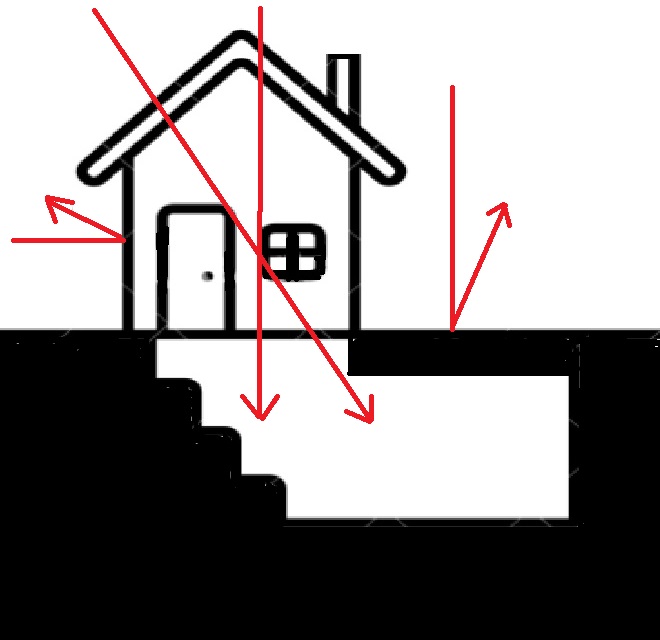Most people assume nuclear shelters are for protection against the blast from a nuclear bomb, however this is not normally the case. Most nuclear shelters are intended to protect the occupants from the high levels of radiation that occur immediately after a nuclear explosion, and which reduce with time. Of course, protection from the blast pressure wave is also desirable. By protecting yourself against high levels of radiation for a couple of days, you can massively improve your chances of survival. So what do you need to do to block the radiation, and what are the best materials to use?
Lead is commonly used as a radiation shielding material in military and laboratory situations, but it is heavy and expensive. You don’t need lead at all (and in fact, as lead is a cumulative poison that attacks the nerves and brain – so, it’s something best avoided). Steel is also fairly good as a shielding material, and only needs to be marginally thicker than lead, to achieve the same level of protection. Concrete is also good – and has the advantage that it is relatively cheap, and is easy to handle (compared to thick, heavy sheets) and can be poured or cast in-situ. Water is another good shielding material, but can easily drain away in the event of structural damage causing leaks. Alternatively, sand is easy to obtain and easy to handle and pack (ie in sandbags), or even soil should be considered – it has a similar shielding value to concrete, and has the big advantage of being almost universally available and extremely cheap!
A useful domestic fall-out shelter would require around 1m thickness of soil (or sandbags) around it to provide something in the region of 1000x reduction in radiation levels. If the shelter is sunk into the ground, then the walls and floor are for all intent and purpose, infinite in thickness. Therefore it is only the ceiling shielding that needs to be considered, The problem with shielding the ceiling/roof of your shelter, is that you need to construct it to withstand the substantial weight overhead.
Some experts advise using the water store inside a bunker as shielding to protect against radiation penetrating via the entrance (bunkers often have a 90degree angle in the entrance to significantly reduce the blast pressure and direct radiation ). However, although water will work very well in this situation, the potential absorption of neutrons (‘neutron activation’) will cause the oxygen component of water molecules, together with other elements present as impurities or additives in in the water to become radioactive (eg calcium, sodium, iron, manganese, silicon and fluorine).
The best way of achieving sufficient shielding in all directions is to site your shelter underground, with an access tunnel or stairs containing a 90degree bend to avoid direct radiation via the entrance. Bunkers located in basements can be an easier option, but do not provide sufficient protection against radiation coming from above. Of course there are other considerations that need to be considered, such as making the shelter airtight with an air filtration system to purify incoming air to replace stale, exhausted air.
